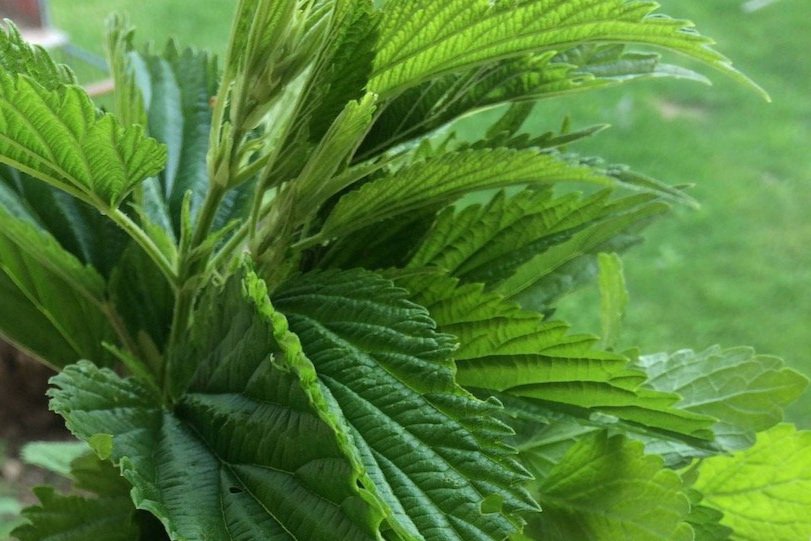the old man is snoring

Buckets of rain today. No complaining is allowed, because we have been so dry here that valid fears were harbored for the growing season. I rely on the growing season for sanity as well as sustenance, and round about May 1 my fatigue with the purchase of well-traveled produce is reaching its peak. My version of the general strike? I will eat from my yard today, and let our seriously unstable commercial food system grind on without my Tuesday participation. It may tumble. Don't say I didn't warn you.
The first green shoots to poke up here see my smiling face, and my scissors, right above them. My dearly beloved once saw me quietly rejecting the frisée in a fancy salad and expressed confusion. A green that I didn't like? "But you'll eat anything the mower kicks up!" he exclaimed. Trying to eat frisée, in my opinion, is like chewing the top of a pineapple. It's pretty and all, but best admired from a distance. The yard has plenty to offer in its place.
In its purest form, with all the weeds in it, this is not a terribly practical, everyday kind of recipe. Though substituting more refined, cultivated greens for the wild will still give you a very tasty result, it's the wildness and fleeting season that make it special to me.
The recipe has mysterious roots, appropriately enough. When the farmer's market first opened in our town about ten years ago, there was a group of (I say this lovingly) long-haired freaky people who came each week in the spring with little hand-lettered tubs of this stuff, or something like it, and they gave away enough free samples of it that soon everyone was wise to its value and their table was cleared off within moments of the market opening each week. Then they vanished. The next year they turned up at a different market, with the same results, and then after that season I never saw them again. Using their label, which listed the ingredients, I came up with this version. It is mighty stuff. The effect of eating what grows right near you is potent, and after a long winter off, it courses through the veins with a noticeable lilt.
If you wonder what lamb's quarters are like, here’s how to recognize them: They have a distinctively pebbly white dust on the undersides of their leaves, and often a purplish color to the stems. They are a tender and delicious substitute for spinach and have a nice long season. They like recently-dug up patches of earth; we have a nice crop around our compost pile.
Nettles are sawtooth-edged plants with a pronounced sting when you touch them, and are best picked with scissors into a basket or bag. Take the tender tops only, and steer clear of roadsides. Their season (for eating, not stinging) is pretty short. By the time the weather warms up, they are too tough to eat. But grab them while you can--nothing else tastes quite like them.
wild greens paté
1 bunch ramps tops (only! no bulbs), or substitute a clove of garlic or some chives or green onions
1 fat bouquet (not that I recommend you clutch it) of nettles, tender tops only
1 fat bouquet of lamb’s quarters, or substitute two big handfuls of baby spinach
2t nutritional yeast
2t tamari or light soy
Wash the nettles very, very, very well (they love to harbor grit), and carefully (consoling yourself that nettle stings are reported to cure joint pain, if it comes to that). Wash the lamb's quarters or spinach. Clean the ramps and chop the leaves.
Bring a 2 quart pot of water to boil and give it a fat pinch of salt. Drop in the nettles and cook for a minute, then drop in the lamb's quarters and/or spinach. Stir a few times and then drain, rinsing under cool water to refresh. Coarsely chop and reserve. The cooking water is full of nutrients and is tasty in stock or soup, if you roll that way.
Heat the olive oil in a medium skillet and sauté the ramp greens for a few stirs, then add the reserved cooked greens. Add a tablespoon or so of water to smooth it out and simmer over low heat until everything is quite tender and still bright green and not terribly wet. Remove to a food processor and add the nutritional yeast (I know it smells weird, but trust me) and tamari, and pulse until you have a thick purée. Taste and adjust for salt and pepper, to your taste.